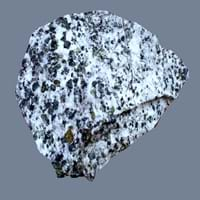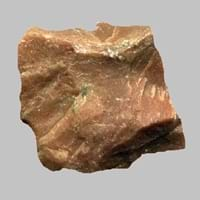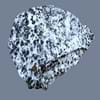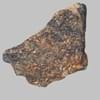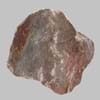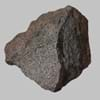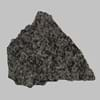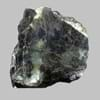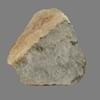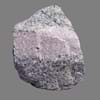Definition
Carbonatite is intrusive or extrusive igneous rock which is defined by mineralogic composition, consisting of greater than 50 percent carbonate minerals
Rhyolite is a fine-grained igneous rock which is rich in silica
Origin
Tanzania
North America
Discoverer
Unknown
Ferdinand von Richthofen
Etymology
From any intrusive igneous rock, having a majority of carbonate minerals
From German Rhyolit, from Greek rhuax lava stream + lithos stone
Class
Igneous Rocks
Igneous Rocks
Sub-Class
Durable Rock, Soft Rock
Durable Rock, Hard Rock
Other Categories
Coarse Grained Rock, Fine Grained Rock, Medium Grained Rock, Opaque Rock
Coarse Grained Rock, Opaque Rock
Texture
Granular, Poikiloblastic
Aphanitic, Glassy, Porphyritic
Color
Black, Brown, Green, Grey, Pink, White
Grey, White, Light Black
Durability
Durable
Durable
Appearance
Dull, Banded and Foilated
Banded
Interior Uses
Decorative Aggregates, Interior Decoration
Decorative Aggregates, Homes, Hotels, Interior Decoration, Kitchens
Exterior Uses
As Facing Stone, Garden Decoration
As Building Stone, As Facing Stone, Paving Stone, Office Buildings
Other Architectural Uses
Curbing
Not Available
Construction Industry
As a Flux in the Production of Steel and Pig Iron, As a Sintering Agent in Steel Industry to process Iron Ore, As Dimension Stone, Cement Manufacture, for Road Aggregate, Making natural cement, Manufacture of Magnesium and Dolomite Refractories, Unknown, Unknown
Arrowheads, As Dimension Stone, Building houses or walls, Construction Aggregate, Cutting Tool, for Road Aggregate, Knives
Medical Industry
Taken as a Supplement for Calcium or Magnesium
Not Available
Antiquity Uses
Artifacts
Artifacts
Commercial Uses
An Oil and Gas Reservoir, As a Feed Additive for Livestock, Gemstone, Metallurgical Flux
Gemstone, Laboratory bench tops, Jewelry
Types
Not Available
Pumice Rocks, Obsidian Rocks, Perlite Rocks, Porphyritic Rocks.
Features
Available in lots of colors, Generally rough to touch, Is one of the oldest rock
Acidic in nature, Available in lots of colors
Archaeological Significance
Monuments
Not Yet Used
Not Yet Used
Famous Monuments
Not Applicable
Not Applicable
Sculpture
Not Yet Used
Not Yet Used
Famous Sculptures
Not Applicable
Not Applicable
Pictographs
Used
Not Used
Petroglyphs
Used
Not Used
Figurines
Not Yet Used
Not Yet Used
Formation
Carbonatites are intrusive or extrusive igneous rocks which are defined by mineralogic composition consisting of greater than 50 percent carbonate minerals and are formed due to low degrees of partial melting of rocks.
Rhyolite is a felsic extrusive rock and due to its high silica content, rhyolite lava is very viscous and is volcanic equivalent of granite.
Mineral Content
Ancylite, Apatite, Barite, Fluorite, Magnetite, Natrolite, Sodalite
Biotite, Feldspar, Hornblade, Plagioclase, Pyroxene, Quartz
Compound Content
CaO, Carbon Dioxide, Sodium Oxide
Ca, Fe, Potassium Oxide, Mg, Potassium, Silicon Dioxide, Sodium
Types of Metamorphism
Burial Metamorphism, Contact Metamorphism
Burial Metamorphism, Cataclastic Metamorphism, Regional Metamorphism
Types of Weathering
Biological Weathering, Chemical Weathering, Mechanical Weathering
Biological Weathering, Chemical Weathering, Mechanical Weathering
Types of Erosion
Chemical Erosion, Wind Erosion
Chemical Erosion, Sea Erosion, Water Erosion, Wind Erosion
Grain Size
Medium to Fine Coarse Grained
Large and Coarse Grained
Fracture
Conchoidal
Sub-conchoidal
Streak
White
Not Available
Porosity
Less Porous
Highly Porous
Luster
Subvitreous to Dull
Earthy
Compressive Strength
Not Available
Cleavage
Not Available
Not Available
Specific Gravity
2.86-2.87
2.65-2.67
Transparency
Opaque
Opaque
Density
2.84-2.86 g/cm3
2.4-2.6 g/cm3
Resistance
Heat Resistant, Pressure Resistant, Water Resistant
Heat Resistant, Wear Resistant
Deposits in Eastern Continents
Asia
China, India, Kazakhstan, Mongolia, Russia, Uzbekistan
China, India
Africa
Namibia, Nigeria, South Africa
Angola, Egypt, Madagascar, Namibia, Nigeria, South Africa
Europe
Austria, Denmark, Germany, Great Britain, Netherlands, Norway, Poland, Sweden, Switzerland, United Kingdom
Germany, Iceland, Ireland, Italy, Spain
Others
Greenland
Not Available
Deposits in Western Continents
North America
Canada, USA
Canada, USA
South America
Brazil
Argentina, Bolivia, Chile, Colombia, Ecuador, Peru, Venezuela
Deposits in Oceania Continent
Australia
New South Wales, New Zealand
New Zealand, Queensland, Western Australia
All about Carbonatite and Rhyolite Properties
Know all about Carbonatite and Rhyolite properties here. All properties of rocks are important as they define the type of rock and its application. Carbonatite and Rhyolite belong to Igneous Rocks.Texture of Carbonatite is Granular, Poikiloblastic whereas that of Rhyolite is Aphanitic, Glassy, Porphyritic. Carbonatite appears Dull, Banded and Foilated and Rhyolite appears Banded. The luster of Carbonatite is subvitreous to dull while that of Rhyolite is earthy. Carbonatite is available in black, brown, green, grey, pink, white colors whereas Rhyolite is available in grey, white, light black colors. The commercial uses of Carbonatite are an oil and gas reservoir, as a feed additive for livestock, gemstone, metallurgical flux and that of Rhyolite are gemstone, laboratory bench tops, jewelry.
